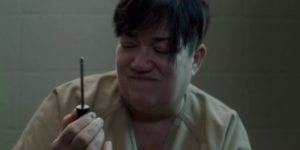Peer Reviewed:
- Gender Stereotypes in Advertising on Children’s Television in the 1990s: A Cross-National Analysis
Beverly A. Browne (1998) Gender Stereotypes in Advertising on Children’s Television in the 1990s: A Cross-National Analysis, Journal of Advertising, 27:1, 83-96, DOI: 10.1080/00913367.1998.10673544
In this journal, the author conducted a study aimed at exploring the presence of sex role stereotypes in children’s television advertisements and media. This study compares the areas of Australia and the United States, and in the past, several studies have shown that gender stereotyping was consistent in television advertisements in the 1990s, however results recently have shown that these specific gender portrayals are less prevalent in current television commercials in both the U.S. and Australia. It was found that although stereotyped body language is equally present in both countries, gender roles, voiceovers, and credibility have higher consistency with traditional stereotypes in United States commercials rather than Australian commercials. Despite this, gender stereotyping was overall found similarly between both countries, it was concluded Australian commercials tended to include more equal male-female ratio in advertisements. Also, Australia less often made girls shy or passive, and boys aggressive or directive. This source is highly useful for the project because it provides evidence for answering our research question and aligns directly with our goal, which is to compare gender stereotypes in television across the world; this source closely compares Australia and the United States.
- Journalist and Source Gender in Australian Television News
David J. Cann & Philip B. Mohr (2001) Journalist and Source Gender in Australian Television News, Journal of Broadcasting & Electronic Media, 45:1, 162-174,DOI: 10.1207/s15506878jobem4501_10
This journal explores the occupation of journalism and its relation to gender in Australian television/news. Throughout history, journalism has been thought of as a mainly male dominated occupation; women who desired to join this field were often discriminated and looked down for trying. Although the ratio now has evened out more and the expectation is no longer that a reporter is always male, a week-long study of five Australian television networks showed that males were overall over-represented in the categories of presenters, reporters, and reliable sources. On the other hand, women were seen dominating the lower-frequency and lower-ranked topics, indicating a clear contrast with gender roles. This showed the author that even though women are increasingly participating in the field of journalism and television, figures of authority still appear to remain men; male reporters usually get the more important and viewed stories to cover. This source is very useful because it gives readers a glimpse of how gender roles are exploited in the news/journalism area of television, and will allow the group members to compare the conclusions and statistics with those of other countries.
- Gender then, gender now: Surveying women’s participation in australian film and television industries
French, L. (2014). Gender then, gender now: Surveying women’s participation in australian film and television industries. Continuum, 28(2), 188. Retrieved from http://prx.library.gatech.edu/login?url=https://search-proquest-com.prx.library.gatech.edu/docview/1509454380?accountid=11107
This article discusses women participation in Australian television and film. According to the author, women are considered minorities in this field(concentrating on creative roles) and statistics have shown decreasing participation, causing under-representation. Gender inequality is seen as a consistent part of Australian employment: women on average earned 16 less cents each week than their male workers in similar fields. The author states that women in Australia have played vital roles in developing the television industry and increasing confidence in creativity for films. However, comparing this survey with a survey done in 1990/1991, women have not made much progress in the feature film area and the percentages indicate an actual decline in women’s participation, presumably discouragement and employment security in the area currently. A conclusive statement made by the article is that women are clearly a potential source of innovation for the film industry, thus this case is worth further investigation because it can lead to companies being more gender-inclusive in the near future. This source is useful for our project because it provides evidence that women are once again, under-represented in the film industry in Australia, and that although improvement over the years is seen, there is still the possibility of women receiving equal opportunity in comparison to men.
- Gender role stereotyping in australian radio commercials
Hurtz, W., & Durkin, K. (1997). Gender role stereotyping in australian radio commercials. Sex Roles, 36(1), 103. Retrieved from http://prx.library.gatech.edu/login?url=https://search-proquest-com.prx.library.gatech.edu/docview/1308098752?accountid=11107
This article dives into gender role stereotyping in specifically Australian radio commercials. It has been shown multiple times that American television remains to embrace the traditional male and female roles and attributes of each gender. A study was done for Australian commercials: advertisements were randomly recorded from three popular radio stations and were looked into. The results determine that females and males indeed are displayed differently in these radio commercials, and that these differences once again, represent the traditional gender stereotypes that Western commercials embody in American commercials. Males represented 78% of central characters in commercials, while females represented a mere 22%. Males were the central authorities and had most influence and females were shown as dependent figures and users. This study confirms the continuation of gender role stereotyping patterns. It is useful for our research because it explores the gender roles of another area of media in Australia, this time being radio commercials. This source gives us a similar perspective seen in other areas of television, that women are portrayed as less influential roles and under-represented in yet another area of media.
- Sex role stereotyping in australian television advertisements
Mazzella, C., Durkin, K., Cerini, E., & Buralli, P. (1992). Sex role stereotyping in australian television advertisements. Sex Roles, 26(7), 243. Retrieved from http://prx.library.gatech.edu/login?url=https://search-proquest-com.prx.library.gatech.edu/docview/1308100802?accountid=11107
This article talks about sex role stereotyping in mainly Australian television advertisements. Throughout history, television has been constantly scrutinized for biases in gender roles and including traditional gender role content, with males being intelligent and having most of the power/influence while women are shown as passive and subordinate. The author makes it clear that television is prominent as mass media and can serve as major pervasiveness in both attitude formation and socialization, linking the fact that equal portrayal of gender can change mass views and culture of television. A sample of television advertisements was grabbed from popular television and discussed by the researchers. This study indicated that men and women were clearly portrayed in align with the traditional sex-role stereotypes. 74% of central characters were men and 26% women. It was concluded that Australian television commercials overall conform to the classic criticized patterns of gender stereotypes present in Western television. This article provides support of gender differences in the Australian television industry, not just children’s television, which will help further answer the research question.
Non Peer Reviewed:
- Gender equity debate in film and TV divides the industry
Neill, R. (2018). Gender equity debate in film and TV divides the industry. [online] Theaustralian.com.au. Available at: https://www.theaustralian.com.au/arts/review/gender-equity-debate-in-film-and-tv-divides-the-industry/news-story/1e85312b0ce8fde6b84fdf7d75c7a70f [Accessed 20 Sep. 2018].
This article works at discussing the gender equality debate in film, proposing that it is in fact creating differences within the industry. It talks about one industry being Screen NSW, not providing funding or participation for all-male panels. Several collaborators have secured funding for a recent film Ladies in Black, featuring a female-dominated cast. The author after continues to discuss the history and background of gender discrimination in the film industry, saying that female filmmakers in the past have been hindered by traditional stereotypes ranging from primary caretaker roles to male screenwriters dominating the decision-making process. Neill at the end, concludes that the debate is not necessarily going for separatism in the genders, but rather equal collaboration by both counterparts because gender should not divide workers, but unite them as a whole to create consistently better films. This article is vital for our research because it delves into the background information of gender discrimination and gives many examples of past films that support the argument. Also, it proposes a possible solution of equal collaboration and not female domination in this industry, and creates a foreseeable future if recognition by all filmmakers take place.








